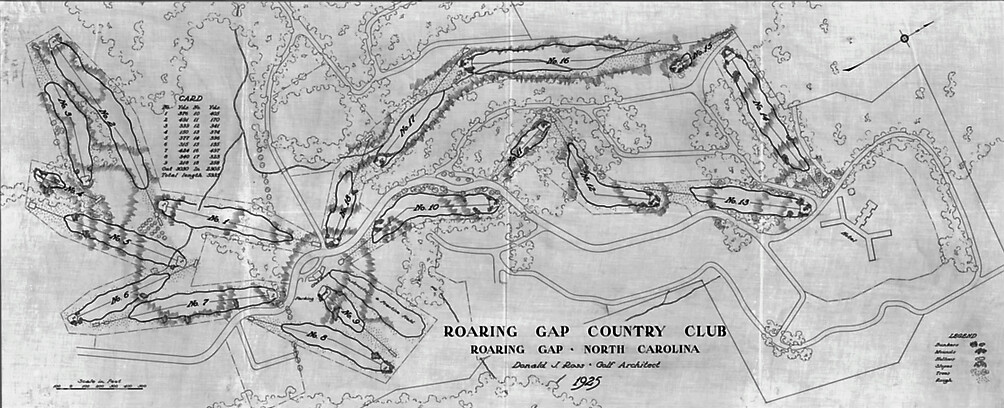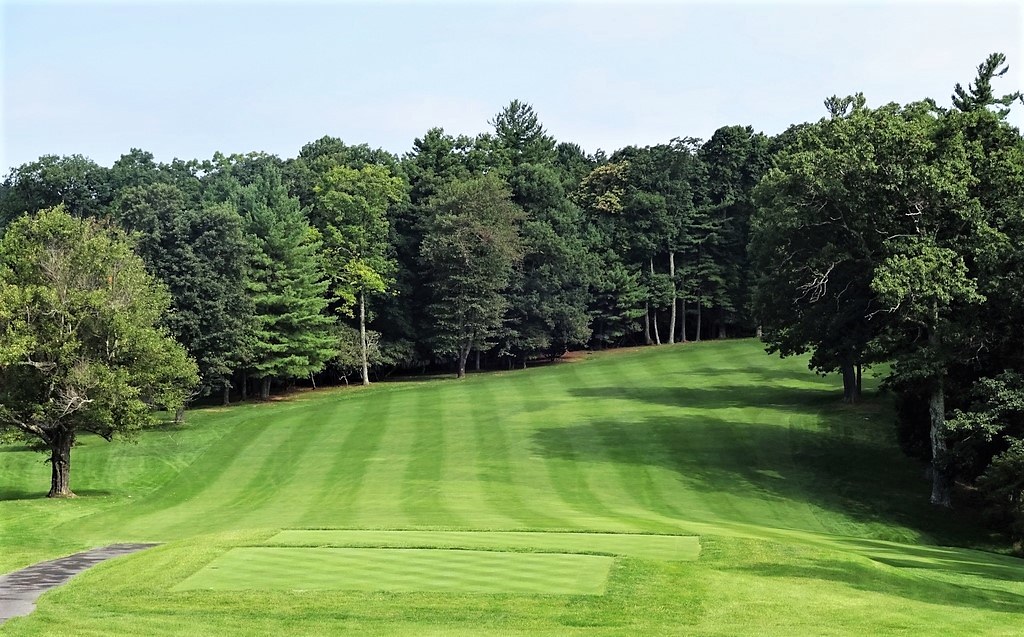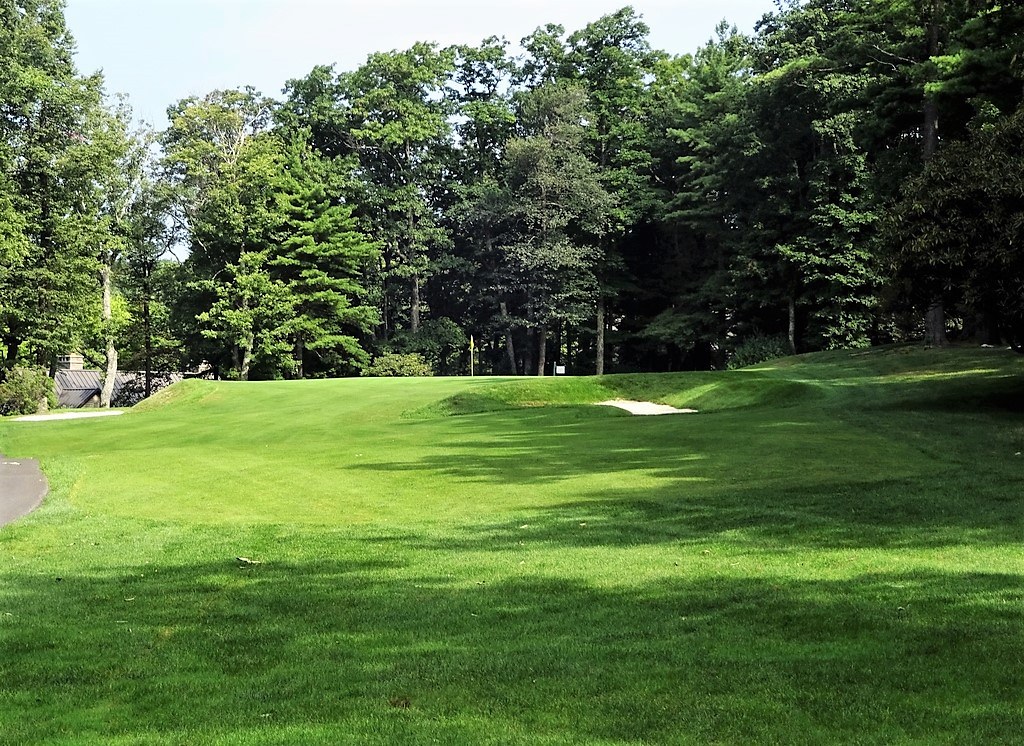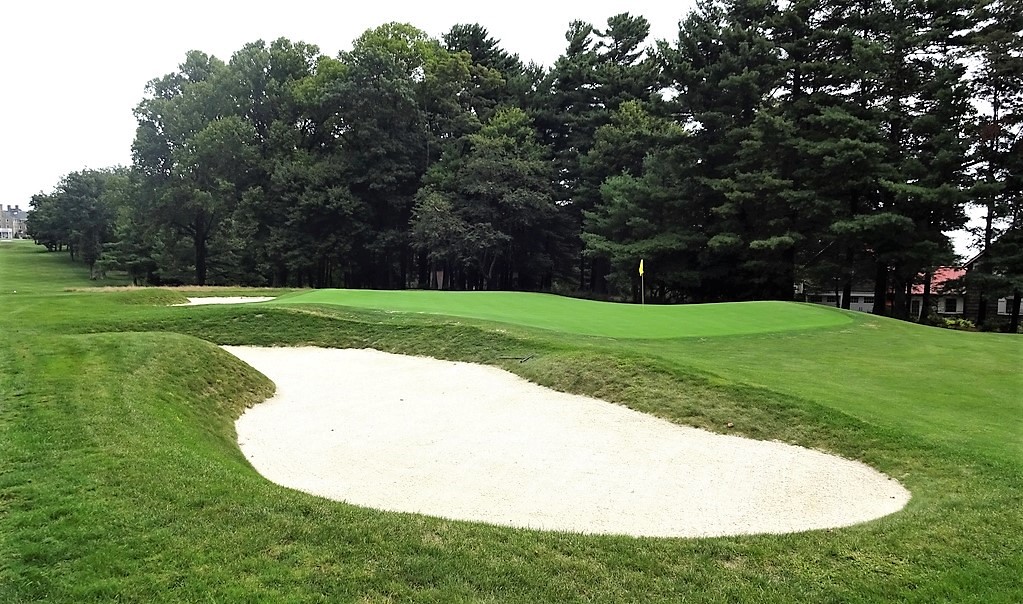Discretely ensconced at 3700 feet in the North Carolina Blue Ridge Mountains, Roaring Gap Club is rarely seen or mentioned. Despite the substantial size and range of activities, the club offers an uncommon friendly and relaxed atmosphere. The comely proshop, lockerooms and bar are sublimely located near the summit of the golf course where the views toward Pilot Mountain and Winston-Salem are captivating. And of course, the stately Clubhouse, once the Graystone Inn,
nearly rivals the course for the position of prime amenity on the property...but of course I neglect to mention the beach

.
Long time member Dunlop White III explains the origins of Roaring Gap.
In 1925, Roaring Gap originated as a corporate venture for Pinehurst, Inc. and Leonard Tufts. Tufts wanted to create a mountain resort away from the summer heat of the Sandhills to serve as an alternative for his mostly northern Pinehurst clientele. Initially, Roaring Gap was referred to as "the Pinehurst of the Hills" and was considered the "legitimate annex of Pinehurst". The Graystone Inn at Roaring Gap was built to function as the summer counterpart to The Carolina Hotel in Pinehurst. In theory, Roaring Gap would help Tufts solidify clientele year-round and stabilize a trained workforce year-round by avoiding off-season pitfalls inherent with an unsteady client-base and employee turn-over.
Pinehurst, their department heads, staff and clientele simply mobilized operations to the Roaring Gap annually when the season turned. It's no coincidence that the golf course was designed by Donald Ross, and Tufts was the first President of Roaring Gap Club. Ross's good friend Alex Innis served dual roles at Roaring Gap and Pinehurst, along with a host of staff members, including Palmer Maples, and E.G. Fitzgerald, the Manager of both hotels. Unfortunately, the depression made it economically unfeasible to continue with the project and Tufts pulled out. Naturally, a layout so intimately tied to Donald Ross, Leonard Tufts and Pinehurst, Inc. had to be restored and taken seriously — even 90 years later.Roaring Gap is an exceptional example of the course keeping pace with the views. This should be no surprise given Donald Ross was the architect. Ross had an uncanny ability to set his greens in natural locations which afford a combination of beauty and challenge. Most Ross courses require an element of experience to decipher the greens; at Roaring Gap this task will take more than a casual game or two before a degree of success can be expected. However, it is the ever-present slopes rather than contours which test our resolve. The newly renovated greens are dramatically expanded to better showcase the effect of the hills on putting and chipping. The re-introduction of false fronts and high cut lines sweeping up greenside mounds intensifies the challenge. Despite popular opinion formed because of Pinehurst #2’s turtleback greens, the basic outline for many Ross putting surfaces is saddle rather than dome shaped, making it imperative to approach from the correct angle, even at greens where sand isn’t employed.
In the recent restoration many greens were lowered about a foot back to grade level thus reconnecting the greens with surrounding shaping. It is quite a remarkable testament to the Green Keeper, Erik Guinther, that with so much work done to the greens it is hardly noticeable. A clever two year plan was devised by Guinther and architect Kris Spence to create a homogenous look to the greens. The additional sod needed for green expansion on hole 1 was borrowed from the green sod cut from hole 2. The additional sod needed for green expansion on hole 2 would be borrowed from the green sod cut from hole 3…. and so on. Eventually, there wasn’t anything left to borrow. At that point, the sod needed to cover the greens at holes 7, 8 and 9 were taken straight from the 20,000 square foot green nursery. The rationale being that the club didn't want to segregate a green with sods of different maturities, since it may be readily apparent to distinguish "old" native turf from "new" nursery turf, (even if it was germinated from the same core compositions), especially when placed right next to each other on the very same green. In the end, the "old" turf and the "newly germinated" nursery turf proved to be indistinguishable on separate greens.

To the course. First, because I am likely the only person on the planet that holds this opinion, Roaring Gap is too hilly to take a position among the truly great courses of the world. During our game we measured the "total climb" (up and down rather than merely a total difference between tee and green) to be approximately 700 feet. Even if an exaggerated number (as crude equipment was used), Roaring Gap is by any definition very hilly. Assuming that on average, perhaps 20 feet of elevation change per hole is the upper limits of ideal, it is clear Roaring Gap does not conform to convention. Be that as it may, the elevation changes do present interesting challenges beyond the severity of the walk, most notably on the 11th!
When entering the property the road cuts the course in two, thus offers alluring vistas across the property. It is a shock then to step on the first tee. The entire front nine runs through a forested area, it is the back nine which has the more open flavour and views. The three shot opener isn't onerous if we take what is given.

The second is a fine one-shotter whose putting surface is obscured...if it looks flat think again.

After seeing the tree-lined tee shot on the 3rd, it is fair to assume that Roaring Gap does not begin in an outstanding fashion. Legging left and blind, the hole, however, does require thought and precision due to the fairway sliding right and not quite requiring a driver. We get our first taste of Roaring Gap's green enlargement. What particularly impresses me is the expansiveness of the green line...it runs up the slopes bringing danger and extremely keen hole locations into play.

More to follow.
Ciao